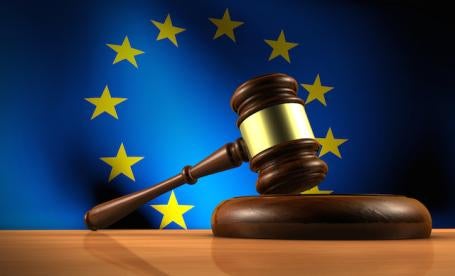On September 16, 2015, the Court of Justice of the European Union (“CJEU”) responded to three preliminary questions referred to it last year from the High Court of England and Wales. The CJEU gave guidance on the registrability or otherwise of 3-dimensional shapes as trade marks. Although the facts concerned the bitterly fought dispute concerning Cadbury’s opposition to Nestlé’s application to register the shape of the four-finger chocolate-coated wafer bar, Kit Kat, (following the two companies’ colour purple dispute, this is the latest battle in the “Chocolate Wars”) the CJEU’s decision is of importance to 3-dimensional shapes more generally. The court’s guidance on gaining trade mark protection by showing acquired distinctiveness through use is particularly significant.
Issue 1 – Absolute grounds of refusal
The CJEU found that the whole shape needs to be covered by one of the absolute grounds of refusal under the Trade Mark Directive (2008/95/EC). This means that where a shape has numerous features that in their own right fall under an absolute ground of refusal (i.e., that feature is necessary to obtain a technical result or it from the nature of the goods itself) the shape will only be refused trade mark protection if at least one of those absolute grounds is applicable to the shape as a whole, rather than in relation to just that particular feature.
Issue 2 – Shapes necessary to obtain a technical result
The CJEU also found that whilst the Trade Mark Directive provides that registration may be refused of signs consisting exclusively of the shape of goods which is necessary to obtain a technical result this must be interpreted as referring only to the manner in which the goods at issue function and it does not apply to the manner in which the goods are manufactured.
Issue 3 – Acquired distinctiveness
Clarification on acquiring distinctiveness over time for the purposes of trade mark protection is most significant for applicants. The CJEU held that in order to obtain registration of a trade mark by arguing distinctive character following the use made of it, the applicant must prove that that mark alone, as opposed to any other trade mark which may also be present, identifies the particular undertaking from which the goods originate. Specifically, the CJEU stated that a trade mark applicant “must prove that the relevant class of persons perceive the goods or services designated exclusively by the mark applied for… as originating from a particular company”. The two points to note here are that (i) it is the mark in and of itself which must identify the applicant as the originator of the goods e.g., if the user identifies the applicant because of a combination of the shape and the applicant’s name embossed or imprinted on the shape then this will be insufficient; and (ii) mere association with the applicant doesn’t seem sufficient, it’s likely evidence is needed that the sign is interpreted as showing that the goods come from the applicant.
Brand owners should be mindful of the landscape on acquired distinctiveness in relation to its applications where the focus is not an absolute ground of refusal under the Trade Mark Directive. The CJEU decision emphasises that applicants may have an uphill struggle in passing the acquired distinctiveness test, not least because a significant number of 3-dimensional marks sought for registration will be used on goods in conjunction with other marks indicating the undertaking from which the goods originate. The judgment affirms that these other marks need to be disregarded when assessing whether the sign applied for meets the test for acquired distinctiveness. Moreover, mere association with the applicant does not seem sufficient — a higher standard is advocated by the CJEU but it is not entirely how applicants will be able show, through survey evidence, that the sign indicates the origin.
The case will now be referred back to the High Court to apply the CJEU’s reasoning to the facts. It remains to be seen which way the High Court will go, but in the meantime it’s interesting to note that both Nestlé and Cadbury were satisfied with the outcome… CovBrands will continue to monitor this battle.





 i
i


